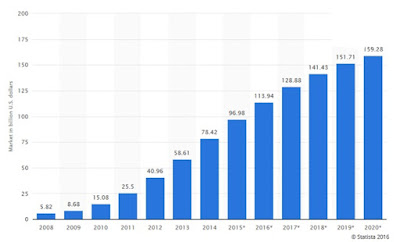Twitter Feed
“Cloud Musings” Named A “Top 50 Blog”
My appreciation and thanks goes out to Jeremy Geelan for including “Cloud Musings” on his list of the Top 50 Cloud Computing Blogs. Thanks is also in order for “HighTechDad”…
Will Oracle Buy Informatica?
According to 1,250 ERP Software Advice readers that will be Oracle’s next acquisition. Terradata came in a close second in this race, suggesting that Oracle will “…play it safe next time…
What’s Next For Oracle?
Watching Larry Ellison and Oracle over the years as it has morphed itself is a real study in market dynamics. It’s transformation from database company through middleware provider to now…
Enterprise Architecture Enables Innovation: Melvin Greer, Lockheed Martin
Earlier this week, my good fried and NCOIC colleage, Melvin Greer was interviewed by Rutrell Yasin of Government Computer News. In the interview, Mel focused on the importantance of entrprise…
Are You A Cloud Architect? NJVC Needs YOU!!
If you are a cloud computing architect, have I got news for you! NJVC, one of the largest IT solutions providers supporting the U.S. Department of Defense (DoD), is building…
“Army Private Cloud” RFP Released
Last week the US Army released a procurement solicitation for the Army Private Cloud. This $249M solicitation calls for a 1-year base period with four, 1-year options. Department of the…
Cloud Musings Direct Launches
In response to request, the inaugural “Cloud Musings Direct” newsletter was launched this week. This bi-weekly electronic newsletter will highlight important government cloud computing industry trends and events. If you…
CloudExpo Europe 2010: Not Your Father’s Prague
When my good friend Jeremy Geelan invited me to speak at CloudExpo Europe in Prague, Czech Republic my imagination went into overdrive. Being a child of the 60’s and a…
NCOIC Plenary Highlights Collaboration and Interoperability
Last week in Brussels, Belgium, the Network Centric Operations Industry Consortium highlighted it’s support of collaboration and interoperability through an information exchange session with the National Geospatial-Intelligence Agency (NGA) and…
GovLoop “Member of the Week”
Thank you to Radiah Givens-Nunez and GovLoop for the honor of being their Member of the Week for June 21-25, 2010. Created in 2008, GovLoop is an online social network…
- Enable cloud service arbitrage based on cost, performance or operational need;
- Help companies migrate operations to the cloud and assist with staff augmentation and training;
- Provide cloud service auditing and SLA monitoring services;
- Help in focusing and managing organizational cloud service demand;
- Provided toolsets to assist in the migration and integration of enterprise applications; and
- Help in change management and the selection and integration of other managed services.
By automating and operationalizing the governance of cloud services, CSBs can efficiently multi-source services and augment them with third party metering and monitoring. Using CSBs, organizations also accelerate their transition to hybrid IT models. This marketplace is typically segmented type of services: cloud brokerage and cloud brokerage enablement, wherein cloud brokerage enablement is further segmented into internal and external brokers. When used internally, cloud enablement platforms helps enterprises adopt the new hybrid IT and multi-sourced operating model. By building organic expertise, companies can personalize IT service consumption and unify
IT service delivery through the use of a corporate self-service store, a dynamic service marketplace, and continuous delivery. This centralized, supply chain approach unifies the order, execution, and management of multi-sourced solutions across legacy and cloud resources, by centrally delegating and tracking execution.
(This post was brought to you by IBM Global Technology Services. For more content like this, visit Point B and Beyond.)
( Thank you. If you enjoyed this article, get free updates by email or RSS – © Copyright Kevin L. Jackson 2016)
Cloud Computing
- CPUcoin Expands CPU/GPU Power Sharing with Cudo Ventures Enterprise Network Partnership
- CPUcoin Expands CPU/GPU Power Sharing with Cudo Ventures Enterprise Network Partnership
- Route1 Announces Q2 2019 Financial Results
- CPUcoin Expands CPU/GPU Power Sharing with Cudo Ventures Enterprise Network Partnership
- ChannelAdvisor to Present at the D.A. Davidson 18th Annual Technology Conference
Cybersecurity
- Route1 Announces Q2 2019 Financial Results
- FIRST US BANCSHARES, INC. DECLARES CASH DIVIDEND
- Business Continuity Management Planning Solution Market is Expected to Grow ~ US$ 1.6 Bn by the end of 2029 - PMR
- Atos delivers Quantum-Learning-as-a-Service to Xofia to enable artificial intelligence solutions
- New Ares IoT Botnet discovered on Android OS based Set-Top Boxes



